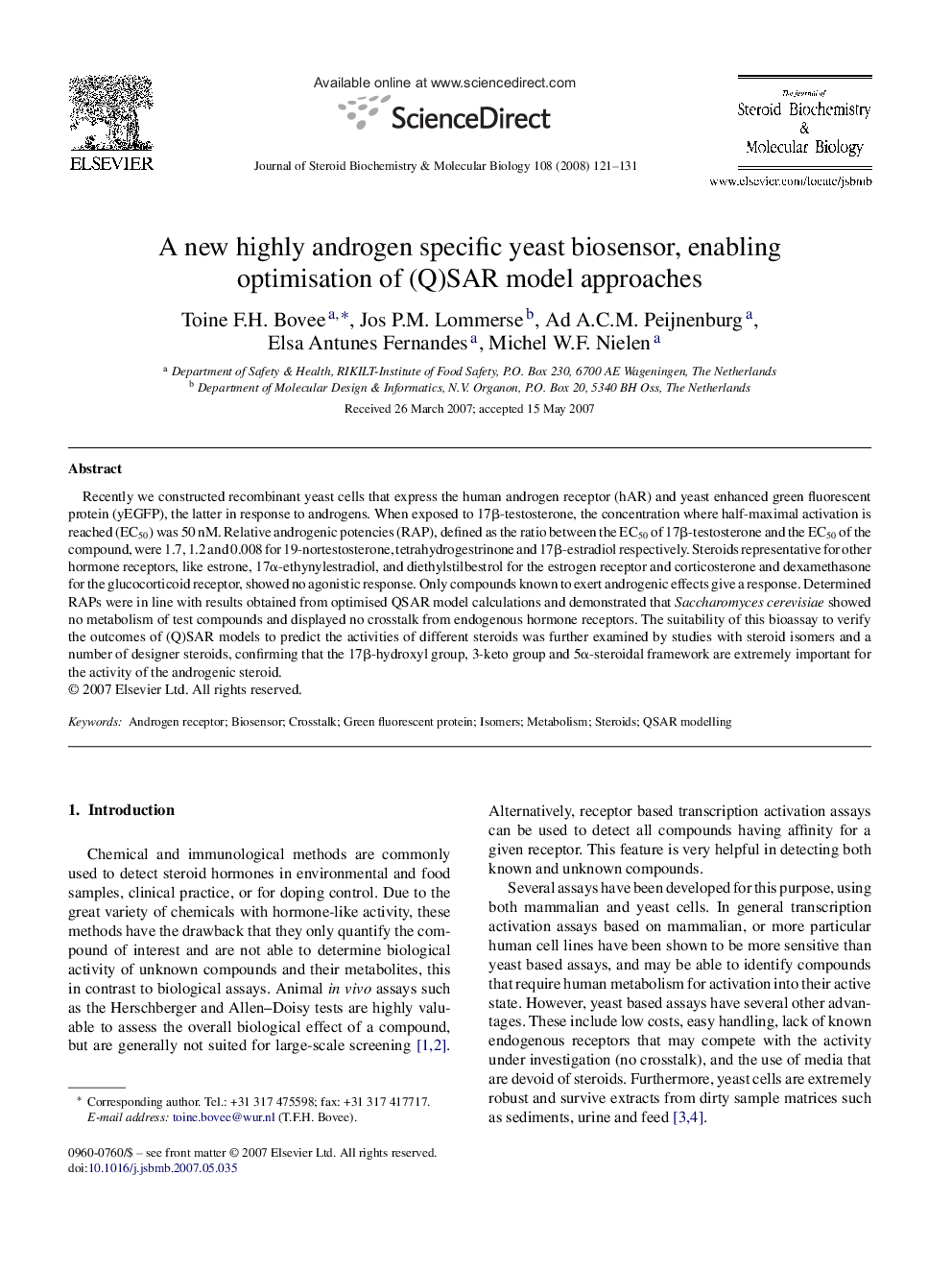| Article ID | Journal | Published Year | Pages | File Type |
|---|---|---|---|---|
| 1992965 | The Journal of Steroid Biochemistry and Molecular Biology | 2008 | 11 Pages |
Recently we constructed recombinant yeast cells that express the human androgen receptor (hAR) and yeast enhanced green fluorescent protein (yEGFP), the latter in response to androgens. When exposed to 17β-testosterone, the concentration where half-maximal activation is reached (EC50) was 50 nM. Relative androgenic potencies (RAP), defined as the ratio between the EC50 of 17β-testosterone and the EC50 of the compound, were 1.7, 1.2 and 0.008 for 19-nortestosterone, tetrahydrogestrinone and 17β-estradiol respectively. Steroids representative for other hormone receptors, like estrone, 17α-ethynylestradiol, and diethylstilbestrol for the estrogen receptor and corticosterone and dexamethasone for the glucocorticoid receptor, showed no agonistic response. Only compounds known to exert androgenic effects give a response. Determined RAPs were in line with results obtained from optimised QSAR model calculations and demonstrated that Saccharomyces cerevisiae showed no metabolism of test compounds and displayed no crosstalk from endogenous hormone receptors. The suitability of this bioassay to verify the outcomes of (Q)SAR models to predict the activities of different steroids was further examined by studies with steroid isomers and a number of designer steroids, confirming that the 17β-hydroxyl group, 3-keto group and 5α-steroidal framework are extremely important for the activity of the androgenic steroid.
